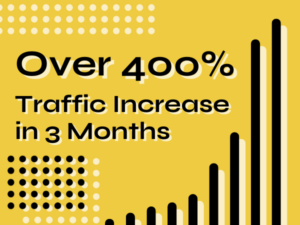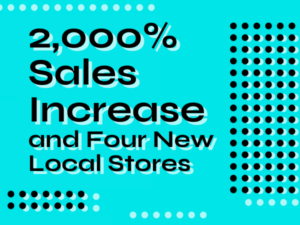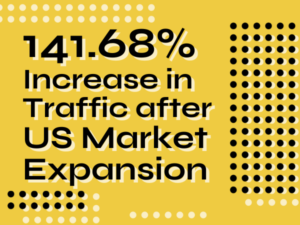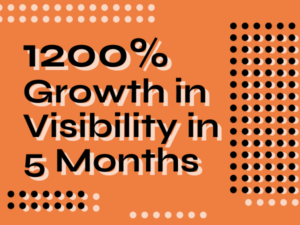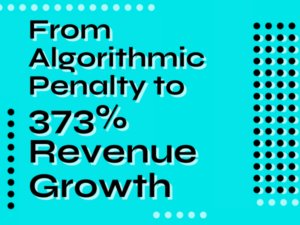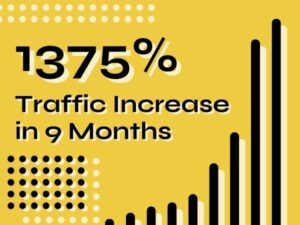Welcome to your step-by-step guide for making money from your blog in 2024! This guide is here to help you explore the latest methods of earning from your blog.
With just one read, you’ll be on your way to turning your blogging into a source of passive income.
We cover everything from how to use paid advertising and affiliate marketing to your advantage, as well as newer methods like membership plans and sponsored posts.
This guide is about more than just making money. It encourages you to use your creativity to stand out from the crowd and boost your impact online. So let’s get started – happy blogging, and here’s to your earnings!
Understanding Blog Monetization
The term blog monetization refers to using your blog as a platform to earn money. This can be achieved by various means, such as running ads, offering services, selling products, paid partnerships, and more. Essentially, you’re using your content and web traffic to generate income.
If you’re a beginner, start small and be patient. Learn the ins and outs of the blogging community and figure out what monetization methods best match your content and audience.
Effective monetization should not diminish the reader’s experience. In fact, the best monetization strategies enhance it since they deliver what readers are looking for or need.
Learning to monetize a blog requires trial and error, learning, and readjusting along the way. You’ll have to assess your blog’s performance, analyze your blog’s stats, learn about your audience demographics, and use this data to guide your monetization strategy.
Remember, making money from your blog is not a sprint; it’s a marathon. With time and determination, you will find the monetization strategy that works best for you and your unique blog.The Role of SEO in Blog Monetization
SEO is key to making your blog more visible online.
Sure, you can share your blog posts on social media and invest in paid advertising, but those require constant effort. With SEO, you get organic visibility, which can last much longer with a proper strategy.
Once you optimize your blog for search engines, you will appear in people’s search results. And this means that people will be more likely to visit your blog.
More people visiting your blog increases your blog’s capability to generate income.
Listen to our co-founder Rad Paluszak talk about it in this episode of SEOSLY Podcast.
There are several key SEO strategies that are proven to enhance your blog’s earning potential significantly. Let’s dive deeper into the details of these strategies.
Keyword Optimization
We’ll start with a basic but vital strategy: keyword research.
Keyword research provides you with a clear understanding of the terms and phrases your potential audience is searching for in Google and other search engines.
Use tools like Google Keyword Planner or Semrush to discover keywords that are relevant to your blog’s content and possess high search volumes.
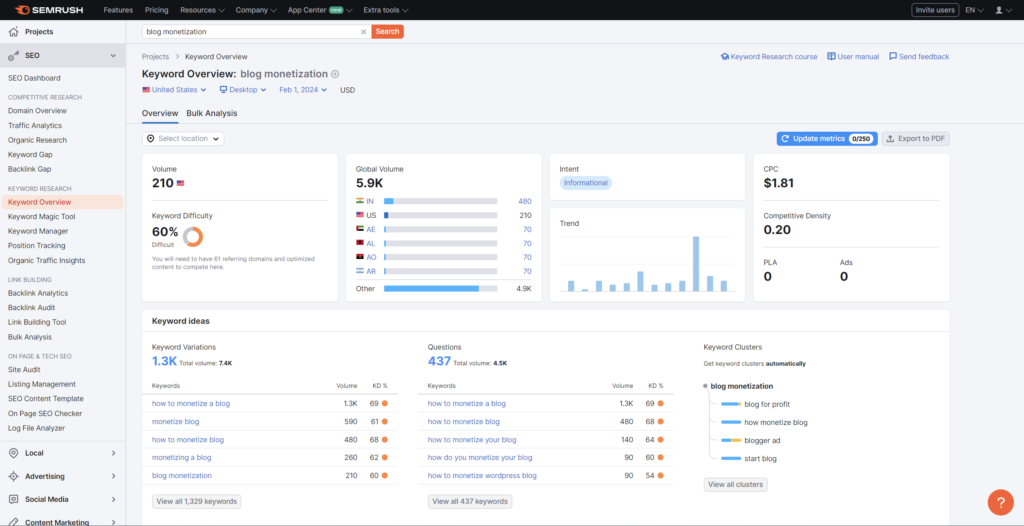
Once you find the right keywords, you should incorporate them naturally into your blog posts, helping boost your blog’s rank in search results. This, in turn, increases your likelihood of being found by your target readers.
Quality Content
Quality content takes center stage when it comes to boosting SEO, especially in the AI era. Producing interesting content that provides actual value to your readers drives user engagement and increases dwell time – or, in simple terms, makes them stay longer.
Beyond its capacity to improve your SEO metrics, quality content is instrumental in fostering trust between you and your audience. The better the content you produce, the more your audience relates to it and the likelier they are to engage in your monetization efforts.
On-page SEO
Another part of SEO that often does not get the attention it deserves is on-page SEO. This includes optimizing the more technical aspects of your blog that directly affect your search engine rankings.
Elements such as meta descriptions, title tags, and URL structures are integral in helping search engine spiders comprehend your content.
A well-executed on-page SEO plan will considerably enhance your blog’s visibility on SERPs, thus making it easier for potential readers to find you.
Great Backlinks
Lastly, building a network of quality links to your blog is an effective tactic. This can be achieved through guest blogging, promoting your blog on social media platforms, or generating content that naturally encourages readers to share it.
Think about it this way: every single backlink you have is proof of your blog’s quality, prompting Google’s algorithm to perceive your blog as a trustworthy source and enhancing your ranking on SERPs.
Using Analytics to Boost Earnings
You may already know that analytics play a crucial role in understanding audience behavior and fine-tuning your website’s performance.
But here’s a nugget of wisdom: these insights can also serve as a powerful tool to boost your revenue. The key lies in harnessing analytics to develop a winning monetization strategy.
Begin by understanding your audience. Use tools like Google Analytics to access valuable data about your visitors, such as their demographics, interests, and browsing habits.
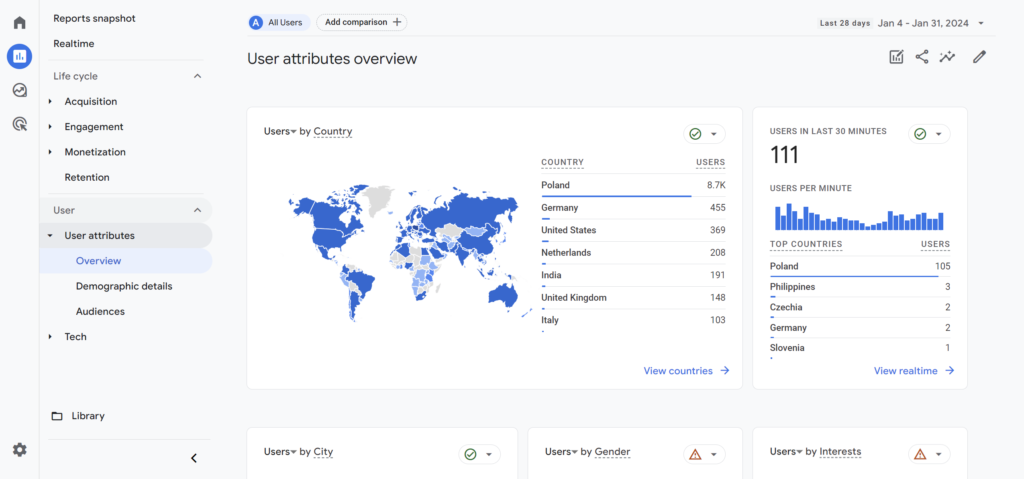
This rich information serves as a guide, helping you create content that resonates with your readers. The result? More blog traffic. And this traffic will ultimately drive up your ad revenue, affiliate sales, and leads.
Next, analyze the performance of your blog posts. Identify posts that are drawing significant views, comments, and shares – these are your audience’s favorites.
Understanding what connects with your readers allows you to focus on creating more of such content while skipping those that don’t work.
NoN Agency Monetizes a Blog: Case Study
A staggering increase in web traffic, going from around 20,000 to over 275,000 views within the 9-month timeframe.
Revenue increase thanks to increased traffic and additional monetization options, including affiliate and newsletter marketing.
Average engagement time achieved with revised website content focused on visitor engagement.
Brand position built; now considered a trustworthy source of information and opinion, with a team that other media can rely on.
1375% Traffic Increase in 9 Months | Sustainable Niche Content Site
Ever wondered how a lackluster website can turn into a web traffic magnet?
The client came to us with a content website (or, a blog) that failed to attract any significant traffic.
With our SEO services we’ve managed to get the website back on track – and got impressive results in just a few months.
We didn’t skip out on monetization either. We developed a newsletter for them, implemented non-intrusive ads, and, as a cherry on top, we helped the client become an Amazon and Raptive affiliate!
All this resulted in an incredible growth in traffic – from merely 20,000 views to over 275,000 in the subsequent period. And with that, an amazing revenue increase!
How to Use Affiliate Marketing
Venturing into the world of affiliate marketing requires careful product or service selection. It’s critical to choose items that resonate with both your content and your audience.
The last thing you want is to promote something your readers find irrelevant or useless. Therefore, ensure that your chosen products tie into your blog’s theme and pique your readers’ interest.
For example, if your blog theme revolves around fitness and wellness, an ideal affiliate product could be home workout equipment, health supplements, or wellness e-books.
Meanwhile, a food blog could look into affiliating with meal service providers, kitchen gadgets, or cookbooks.
Affiliate marketing is about more than just making sales; it’s about enhancing your audience’s experience. When done correctly, it can create a win-win situation. You earn a commission from promoting a product while your audience learns about a product that can benefit them.
To maximize your affiliate marketing efforts, consider the following strategies:
Endorse Products You Trust: Only recommend products or services to your audience that you have personally tried and found beneficial. This approach will not only build trust but also allow you to provide detailed reviews.
Use SEO-Friendly Links: Ensure your affiliate links are search-engine friendly. The text containing the link, also known as anchor text, should describe the product or service rather than appearing as just a URL.
Leverage Content Marketing: Create high-quality content around the products or services you’re promoting.
These can be blog posts, videos, infographics, etc. – we dig deeper into those below.
Monitor Results: Keep track of how often your affiliate links are clicked, the ratio of visitors making a purchase, and the overall success of your affiliate strategies. There are various tools available that can help you track and analyze this data, including Google Analytics, SEMrush, and various affiliate marketing software like Voluum, Cake, HitPath, etc.
Rad PaluszakOne tip to help you earn more money from your blog is to make it easier and more appealing for visitors to click on your affiliate links. This process is called Conversion Rate Optimization (CRO). Through CRO, you can make small changes that can increase the revenue you earn from your affiliate clicks. We usually see 15-25% increase in affiliate revenue with a minimal investment.
Alongside CRO, the key to blog monetisation, especially on a content-heavy website, is satisfying your user's intent as quickly as possible. The easier it is for the users, especially those using mobile devices, to find the information, the better. Meaning, try to place your direct answer (or a gist of it) as high up on the page as possible.
Co-Founder & CTO
Creating and Selling Digital Products
Creating and selling digital products can be a profitable way to make the most of your online presence. This isn’t limited to physical goods or affiliate marketing – the digital space offers plenty of opportunities.
The best part? No worrying about maintaining inventory or handling shipping. It’s a simple way to generate income from your blog.
Start by identifying what your audience needs. Is there an issue your product can address? Once you’ve found a niche, begin creating.
| Your Product | Description |
|---|---|
| eBooks | One of the most popular forms of digital products, ranging from how-to guides, novels, self-help books, cookbooks, to educational textbooks. |
| Online Courses | Learning programs usually in a specific subject, delivered online. They often include video lectures, PDFs, and live classes. |
| Digital Artwork | A great option for those with artistic skills. Includes graphics and illustrations, UI designs, and more. |
| Stock Photos | Profitable for skilled photographers. Stock photos can be purchased and used by bloggers, web designers, advertising agencies, and media outlets. |
| Software | This could range from bespoke mobile apps to personalized productivity tools, developed according to audience needs. |
| Music | Musicians and composers can sell their songs, beats, or instrumentals online, either as digital files or through streaming services. |
| Podcasts | With the rise in popularity, many creators offer premium, paid content alongside free episodes. |
You Need to Promote Your Products! Don’t just expect sales to pour in once you launch your product. It needs to be marketed. How you can do this?
- Social Media Promotion: Share your digital products on various social media platforms with catchy captions and relevant hashtags to ensure higher visibility and potential customers. Remember to engage with your audience, too!
- Collaborations: Collaborate with other brands or influencers who can promote your product to their followers. This can also result in increased brand awareness and sales.
- Giveaways/Contests: Organize giveaways or contests on social media platforms where the prize is the digital product you’re selling. This will generate excitement and increase audience engagement. Those who won’t win may still be tempted to buy it from you.
- Guest Blogging: Write engaging posts for other blogs about your digital products, explaining how they solve a problem or benefit the user, and link the product page to the blog. Or, write about any topic, as long as you can mention your product. This is also a nice link building tactic!
- Paid Advertising: Use paid ads on social media or Google to reach a larger audience who are potential customers. It may be more costly, but if you’re looking for a quick boost in traffic, this is the way to go. Keep in mind that it doesn’t last long, too.
- Email Marketing: Send newsletters and promotional emails to your subscribers, sharing information about your new digital products with a call to action leading them to purchase.

Jaryd KrauseAn excellent addition to blog monetization strategies is the creation of a paid newsletter, offering premium content exclusively to subscribers. This approach not only cultivates a dedicated audience but also ensures a steady stream of recurring revenue, a melody every online business owner loves to hear.
Founder of Buying Online Businesses
- Partnerships: Partner with businesses that complement yours. You can increase your sales by offering your digital product alongside theirs, creating a bundle deal, or selling it separately, whatever works best. This partnership could open up a profitable sales avenue, bringing your product to a whole new set of customers.
- Free Trials: Offer a limited-time free trial of your product, which enables potential customers to try it before buying. Indeed, free trials may be a little more difficult to introduce with certain products, but it is not something that cannot be done. And it can definitely help you convince those on the fence!
- User Reviews: Encourage your customers to share their positive experiences with your digital products. Their reviews will serve as valuable social proof – a powerful push for potential customers. By showcasing the benefits and results that your product delivers, a simple review can turn a potential customer into a convinced buyer.
- Discount Codes: Offering promotional discount codes can be a powerful strategy. These special savings not only reward your loyal customers, they can also entice them to make immediate purchases. It’s an effective method to boost conversions and increase sales.
Offering Online Courses
The demand for online learning is growing rapidly.
If you have specialized knowledge, it’s a great idea to turn it into an online course. This allows you to not only earn money but also establish yourself as an expert within your field.
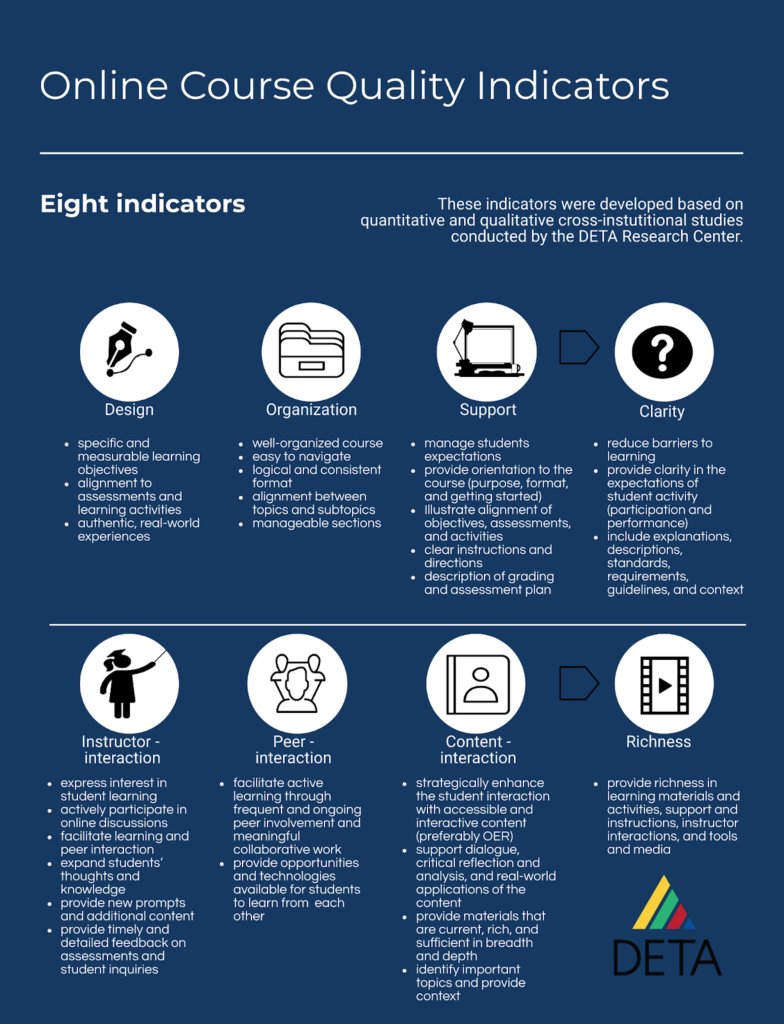
At this point, you are probably well aware of the importance of knowing your audience. To not repeat the same thing over and over, let’s just say that as a person offering online education, you need to know how to adjust your courses to your audience.
Beginner digital artists will prefer different means of learning than MBA graduates wanting to further their business skills.
There’s also a growing demand for in-person courses. Some people prefer having live meetings with their teachers because they learn better when they have a more experienced person to work with.
Whichever approach you decide to take, remember that as long as you teach something of value, there will be an audience for you.
The Power of Sponsored Posts
Let’s now focus on another money-making strategy: sponsored posts. You heard it right! In 2024 and beyond, sponsored posts will continue to be a key part of blog monetization.
Sponsored posts are a form of native advertising that blends seamlessly with your blog content, making them less intrusive to your readers. They can take many different forms, such as:
- Articles,
- Listicles,
- Videos,
- Photos,
- Infographics,
- Illustrations
- Carousel ads,
- Reels,
- Podcast episodes.
The best part? It’s a mutually beneficial arrangement. You earn money for creating and sharing the content. The sponsoring brand, on the other hand, gains exposure to your audience. It’s a beneficial two-way street worth exploring.
However, you should always strive for balance. While sponsored posts can be a great source of income, they shouldn’t dominate your content or disrupt your readers’ experience.
Maintain your blog’s authenticity by ensuring that sponsored content complements your existing material and continues to bring value to your audience.
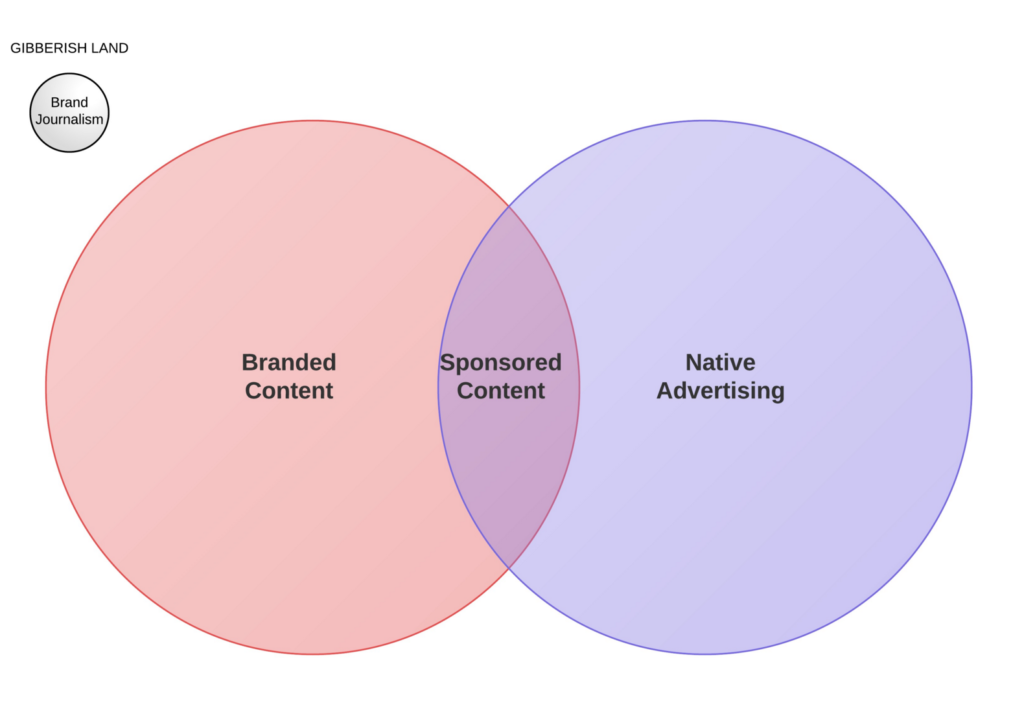
Monetizing With Subscription Services
The world of blogging offers vast opportunities, including subscription services. By asking a modest monthly fee, you can offer your audience access to exclusive, high-quality content. This way, your followers get value, and you secure a steady stream of income.
Let’s break this down into simple steps:
- Identify Exclusive Content: Decide on the unique content or services you can offer to your subscribers. These can vary from in-depth articles and e-books to webinars or coaching sessions. This premium content forms the core of your subscription service.
- Combine Free and Premium Content: Offering a mix of free and premium content not only attracts new visitors to your blog but provides them with a sneak peek of what they could access with a subscription. This tactic can significantly increase your subscriber base.
- Ensure Easy Subscription Process: It’s important to make the subscription process quick, user-friendly, and secure. A hassle-free experience can mean the difference between gaining and losing a potential subscriber.
Examples of popular membership management platforms include:
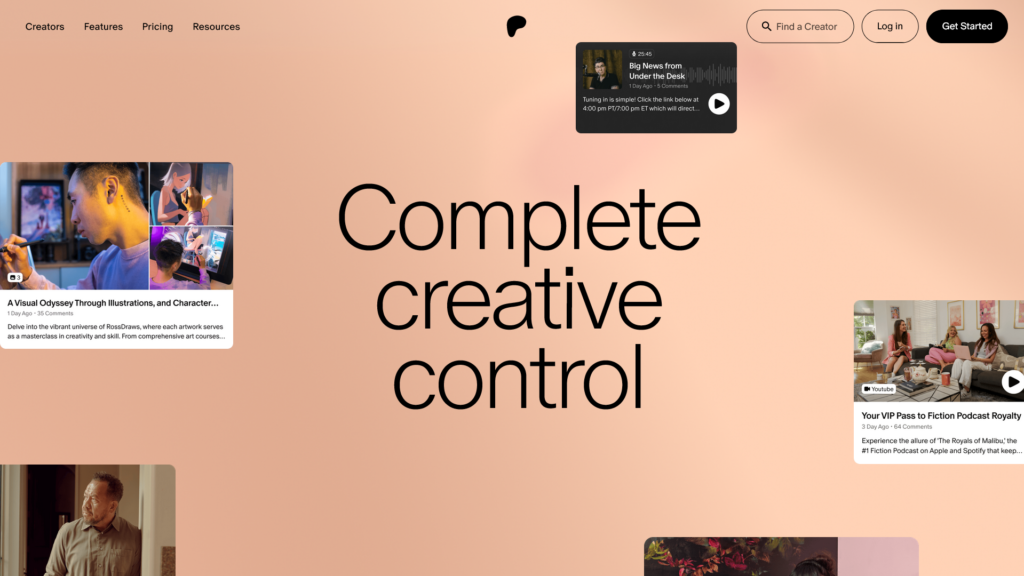
Patreon: This platform allows bloggers and other content creators to receive subscription-based payments from followers. You can create multiple tiers of monthly subscriptions, each offering different benefits.
Buy Me a Coffee: A platform with a little different approach to that of Patreon. Apart from offering standard subscriptions, it also gives your audience an easy way to buy you a coffee – make one-time donations of a set amount of money.
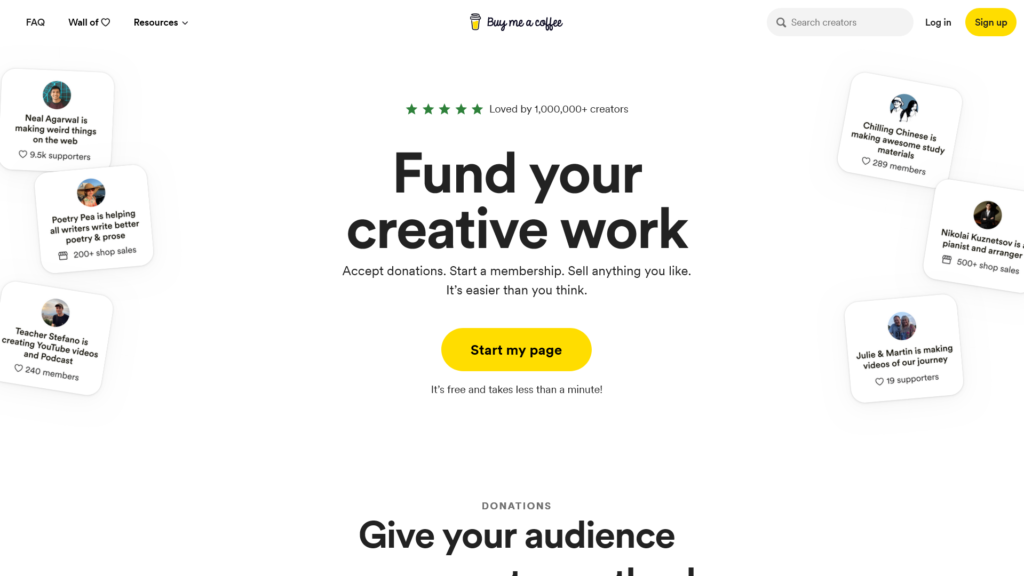
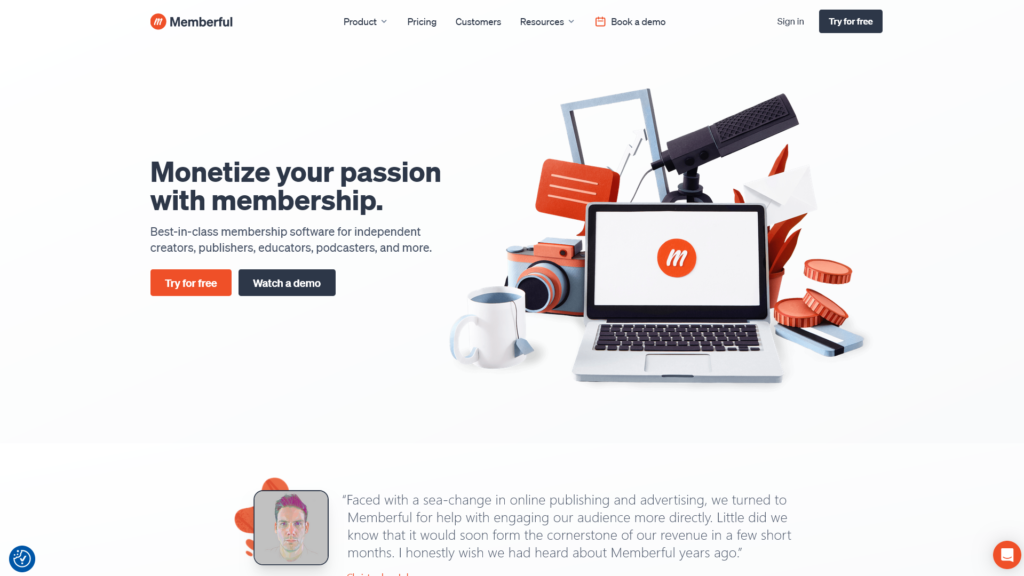
Memberful: Perfect for integration with WordPress sites, Memberful makes the subscription process easier. It supports one-time payments, subscriptions, and even pay-what-you-want pricing models directly on your website.
Ghost: Ghost is a publishing platform designed to simplify the process of running a membership site. It incorporates a fully managed newsletter and subscriber CRM built right in.
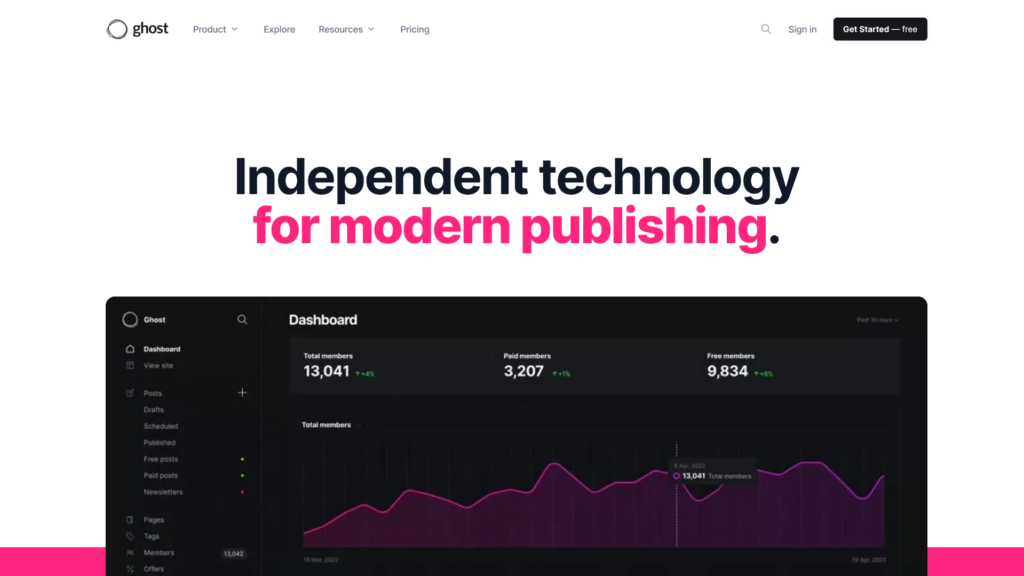
Earning Money Through Online Consulting
Online consulting can be a potential income source, especially if you have specialized industry knowledge. As a consultant, you utilize your expertise to help businesses solve problems, improve their performance, and meet their goals.
If you’re thinking about monetizing your blog through consulting services, it’s essential to establish your credibility. Here’s how:
- Show Your Expertise: The first and most important thing is to demonstrate your expertise. Show off your knowledge and experience through your blog posts. You can also create case studies and webinars, or offer free advice to showcase your skills.
- Build a Concrete Online Presence: Your online presence should reflect your specialty. Be sure to include testimonials from your previous clients, share achievements, and mention any recognitions you have earned.
Your consulting services don’t have to be one-dimensional. You can offer a range of options.
This can include one-on-one sessions, group workshops, or even online courses. By doing so, you cater to a variety of budgets and needs. This strategy can significantly boost your earning potential!
| Niche | Type of Consulting | Target Audience | Consultation Details |
|---|---|---|---|
| Health and Fitness | Personal training consultation, Nutrition consultation | Fitness enthusiasts, individuals seeking a healthier lifestyle | Offering personalized fitness plans, dietary advice, and lifestyle changes |
| Lifestyle | Life coaching, Personal development consultation | Individuals seeking life balance and personal growth | Guiding clients on life choices, career paths, and personal development strategies |
| Finance | Financial planning, Retirement planning | Individuals seeking financial advice, retirees | Providing financial management strategies, investment advice, and retirement planning |
| Fashion | Style consultation, Personal shopping consultation | Fashion enthusiasts, individuals looking for style makeovers | Offering personalized fashion and style advice, wardrobe planning, and shopping assistance |
| Marketing | Marketing strategy consultation, SEO consultation | Small business owners, marketing professionals | Advising on marketing strategies, digital marketing trends, and SEO optimization |
| Technology | IT consultation, Tech product reviews | Tech companies, individuals interested in the latest tech | Providing insights on IT solutions, software, and hardware reviews, tech trend analysis |
| Education | Educational consultation, Curriculum planning | Educators, institutions, parents | Offering guidance on educational methods, curriculum design, and learning techniques |
Building a Profitable E-commerce Store
Creating a flourishing e-commerce store involves more than just selling items. It’s about crafting a unique brand that speaks to your audience. Essentially, you’re not just opening a store, you’re forming an online identity based on your distinct worth.
Once again, you need to pinpoint your target audience. Ask yourself, who are your customers? What do they want? Understanding their needs and preferences is key. Once you’ve got that nailed, you can customize your products, web layout, and promotional strategies to suit these needs.
Aren’t sure what to focus on if you want to stand out from the crowd? Let’s look at real-life examples of successful e-commerce stores.
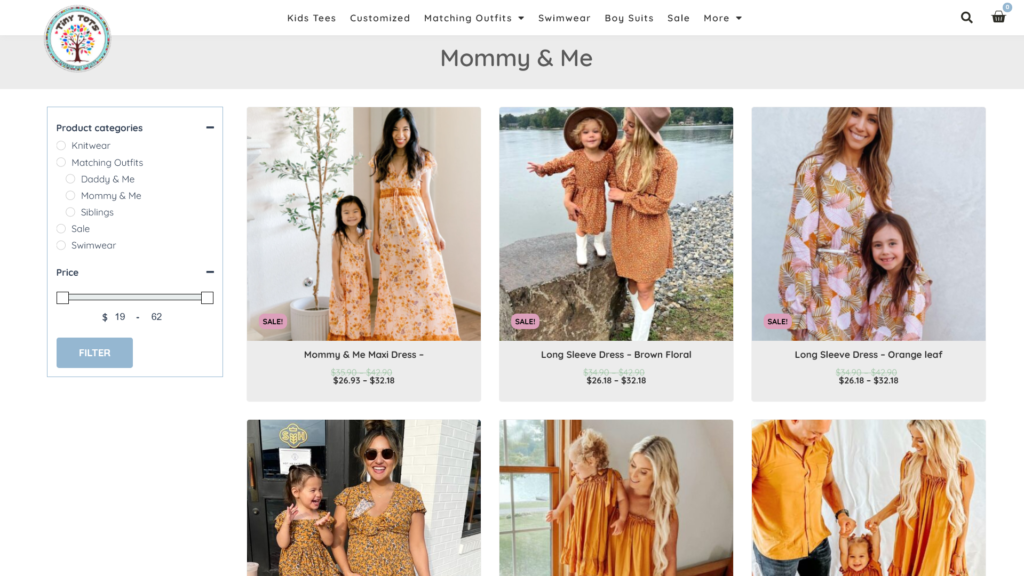
#1 Tiny Tots Kids:
An online store catering to modern, busy parents with a unique selection of baby clothes and essentials. They understand that parents are looking for high-quality, durable, and safe products that provide convenience. Their shtick? Matching outfits.
Their website has a sleek, clean design, ensuring easy navigation for time-crunched parents. Their product descriptions are extremely detailed, with the safety features, user instructions, and product benefits highlighted prominently. They offer promotional vouchers and discounts for first-time purchases to attract new customers and subscriptions for recurring purchases for their loyal client base.

#2 Warby Parker:
This eyewear brand revolutionized the industry with its try-at-home-for-free program, which allowed customers to try on five frames at home before purchase. They identified a common issue in online eyewear shopping: the inability to try on glasses.
Their website is intuitive and easy to navigate, with clear pricing and product images. They also provide virtual try-on features for their customers. To cater to their socially conscious audience, they have a buy-one-give-one program where a portion of the profit from every pair of glasses sold is used to provide glasses to someone in need.
More tips to run a successful e-commerce store
| Tip | Example |
|---|---|
| Identify the specific demographic that is most likely to consume your blog content and understand what they value and what they’re interested in. | A fitness blog will attract a readership that is enthusiastic about health and wellness. |
| Use the design and aesthetic of your blog to capture your brand’s essence and appeal to your readers. | A blog dedicated to organic living will benefit from a green, nature-inspired design. |
| Create exclusive content or limited edition series or features when appropriate. This generates anticipation and attracts more readers. | A sneaker blog could write a series on the rarest sneaker styles from top brands. |
| Use the power of social media platforms that your target audience frequents for promotion. | Fashion blogs that are focused on teen readers should consider promoting their content on Instagram. |
| Ensure that the content you produce aligns with the values of your brand. If you’re blogging about eco-friendly living, focus on ethically and organically sourced products. | An eco-friendly beauty blog reviewing and recommending organic, cruelty-free skincare. |
| Consider promotional strategies like discounts on sponsored products or encouraging signups for premium content to attract new readers and followers. | A blog geared towards parents offering discount codes for first-time buyers at baby product websites. |
| Provide in-depth and detailed posts that highlight unique features or benefits of the topic or product you’re discussing. | A blog focusing on baby gear could write in-depth reviews discussing safety features. |
| Engage with your blog readers through varied types of content, like blog posts and demonstration videos. | A blog about healthy meals offering video tutorials on cooking with their recommended products. |
| Encourage loyal readership through regular discount codes or subscriptions for premium content. | Offering a premium content subscription plan with regular deliveries of baby products. |
| Cater to your audience’s unique needs – for instance, if you’re blogging about pre-made fitness meals, cover a range of dietary requirements. | A fitness-focused meal prep blog offering information on gluten-free, vegan, high-protein, and low-cal meal options. |
Renting Ad Space on Your Blog
Advertising is one of the most common ways to earn extra income from a blog, and it can be particularly profitable for blogs with high traffic. To optimize your ad revenue, you need to select the right advertising network and strategically place your display ads.
Consider using advertising networks such as Google AdSense, Media.net, and BuySellAds. Choose the one that best fits your blog’s audience and content.
Remember, the ads you display should be relevant to your content but not disruptive to your audience’s experience. Strategic ad placement is key to maintaining user engagement while maximizing revenue.
Google AdSense
Google AdSense is a popular network that allows you to display ads on your blog that are relevant to your content and audience.
The ads are provided by advertisers who are part of Google’s Ads program, and bloggers earn money when their visitors interact with these ads through clicks or impressions.
Media.net
Media.net is an ad network that offers contextual ads, meaning that the ads displayed will be related to the content of your blog.
It is a direct competitor to Google Adsense and is powered by Yahoo and Bing, making it a viable alternative for bloggers looking to diversify their advertising sources.
BuySellAds
BuySellAds is a network where bloggers can set their own advertising rates and have direct control over the ads that appear on their site.
It acts as a marketplace connecting advertisers with publishers, making it ideal for bloggers with a well-defined audience and who want more control over their ad placements.
Too many ads could deter readers. Try different placements and see what works best for your blog.
The Coalition of Better Ads lists common intrusive ads that push users towards installing or enabling ad-blocking software. While this may not sound like something that needs a study, having a list of ad types that people despise more than others may come in handy.

On top of that, serving fewer ads can turn into more profit for both you and the advertiser. This way, you can focus on the quality and relevance of the ads on your website – those will get more clicks!
Writing Paid Reviews
Another excellent strategy for blog monetization is writing paid reviews. This could be a great opportunity for you, especially if you have a talent for creating captivating content.
The concept is simple. You write reviews for products or services. Many businesses are ready to pay for such reviews. They are looking for insightful and honest feedback that can improve their brand’s visibility and credibility.
The process is straightforward, too.You can reach out to potential clients, or they might reach out to you. Start by identifying businesses or products that align with your blog’s content and audience. Then, approach them and offer your review services.
They will send you their product for testing. After trying it out, you write a detailed review and post it on your blog.
Your honesty is vital. Your readers believe in your opinion. It’s important to maintain that trust. So, while highlighting the product’s advantages, don’t hesitate to point out any negatives.
Writing paid reviews can be beneficial for everyone involved. It adds valuable content to your blog. It provides useful information to your readers. And, with all that, you make money.
Tips for Negotiating Sponsorship Deals
Negotiating sponsorship deals effectively is key to boosting your blog income. Here are some strategies to navigate these opportunities:
- Know your worth: Use analytics data to demonstrate the reach and engagement your platform can offer brands. Knowing your audience adds to your credibility and reinforces the value you bring.
- Communicate openly: If a brand’s expectations exceed what they’re willing to pay, don’t hesitate to clarify this. As a blogger, you’re also running a business.
- Don’t settle: If a brand’s offer doesn’t match the value you bring, don’t be afraid to negotiate. Brands approach you because they recognize the potential in your platform.
- Remain professional: Regardless of whether a deal is reached, keep communications open for potential future collaborations. Maintaining professionalism is paramount for long-term success.
Legal Considerations When Monetizing a Blog
Becoming a blogger is more than just writing on a digital platform. It involves stepping into the shoes of a business owner. And it means that there are certain rules and laws to follow.
Let’s start with copyright laws. It’s simple. Always use your own content. And if you borrow, give credit where it’s due. Remember, online content isn’t a free-for-all.
Then, there’s transparency. If you’re promoting a product and getting paid for it, let it be known. It’s not only about ethics. The Federal Trade Commission (FTC) insists on it.
Your blog content needs protection, too. Register it with the U.S. Copyright Office or any other respective local government body. It’s a simple step that comes packed with legal safeguards against content theft.
And yes, privacy laws matter. Collecting personal data? Make sure you have a clear privacy policy. It’s not optional. Especially if you want to operate in the EU.
What about taxes? Well, your blog income isn’t tax-free. Keep track of your income and expenses. If taxes confuse you, seek help from a tax professional.
The digital world has long been turned into a proper business space – and so, the same rules apply there. Be informed and stay ethical. That’s the key to monetizing your blog effectively without getting into any legal trouble.
Future Trends of Blog Monetization
Looking to the future, it’s essential to stay updated with trends in the ever-changing digital money-making world. This ensures you remain competitive and profitable.
| Trend | Our predictions |
|---|---|
| Membership Sites | Rising in popularity as ad revenues decrease. Bloggers are adopting membership models for consistent income and offering exclusive content to followers. Drawbacks exist, but the model is becoming more prevalent. |
| Video Content | Still increasingly popular with options like webinars and video courses. Monetization can occur through sponsorships or pay-per-view arrangements. |
| Podcasts | Continue to attract engaged audiences and sponsors. Success is achievable, especially with unique ideas, allowing income through sponsored episodes or exclusive content for paying subscribers. The market is well-developed, but new ideas can still penetrate and succeed. |
| Affiliate Marketing | Remains relevant but is evolving. Brands are shifting towards meaningful partnerships beyond mere product placement. It’s crucial to partner with brands that align well with your content and audience. |
With all these trends, you should not forget about SEO and the need for high-quality content. Good SEO practices attract people to your site, increasing traffic and, with that, the income from all your monetization strategies. Stay updated with SEO trends to keep your blog easy to find and relevant.
Wrapping up
Monetizing your blog is still a valid way of making money in 2024.
Regardless of whether you decide to set up a membership using Patreon or decide to set up Google Ads, there’s a path for every blog out there.
The key to success lies in picking the option that suits you and your audience the best – and with our guide, you’re well-equipped to do just that.
So, go ahead, try out different methods, see what sticks, and remember, the most important part of blogging is to keep delivering content that resonates with your audience.
Stay consistent, be transparent about your monetization, and never stop exploring new ways to enhance your blog’s value. Here’s to making your blogging journey in 2024 both rewarding and profitable!






![Google March 2024 Core Update: What we know so far? [Don’t Panic]](https://non.agency/wp-content/uploads/2024/03/google-march-2024-core-update--300x225.png)


